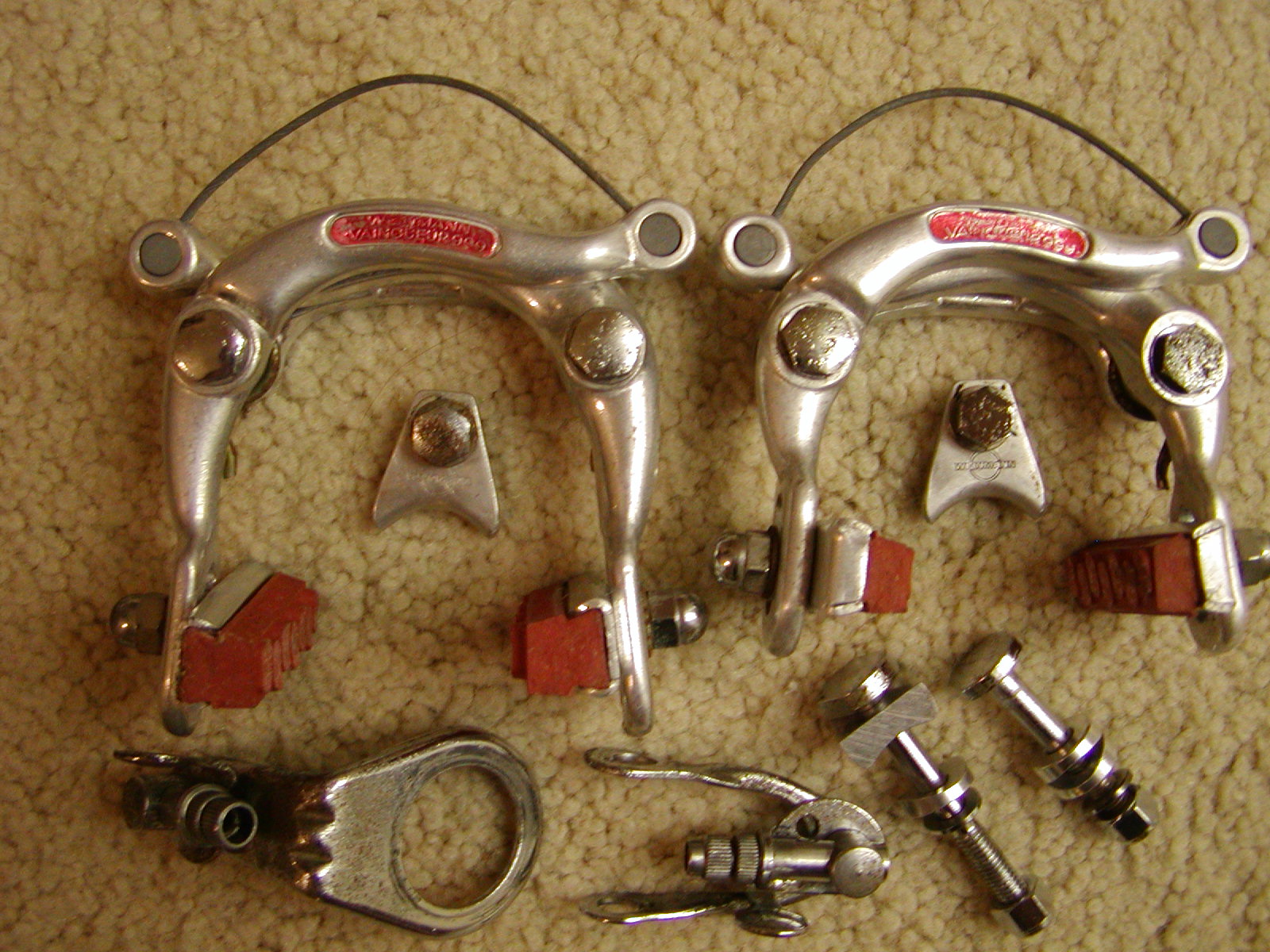

This is a 1960's brakeset. It has plenty of rust. Nearly all the chrome pieces have rust. There is a 610 caliper and a 750 caliper. This is a 1200 x 1600 picture so you might want to click on the image for more detail. The boltset appears to be practically NOS to me, and it has NYLOC bolts which probably weren't stock on this brakeset. .
The main historical flaw on this brakeset are that one pair of brake pads/shoes are in a 36 mm holder, rather than a 42 mm holder. As a result, the pads hang out of the holder by 6 mm and it looks awful. I myself am looking for additional 42mm holders of this type and they are very precious to me.
The brakes are non-QR, and the hoods are soft and supple - they appear to be NOS, or almost NOS hoods. The barrel adjusters on these brakes are steel (very ugly steel, probably not chromed.)
As you can see, the letters are embossed against a red background. Ok, I was an idiot and used some magic marker, but after i took this picture i rubbed on the labels every so slightly and now the letters are silver again. I have placed a 1970's brake caliper behind this one to show the differences clearly. The 1970's brake has no embossing - it is flat. Notice also that the mid 1960's brakes had metal washers behind the pivot bolts, not red plastic bushings. Note also that the straddle wires do not have the "-W-" weinmann logo. I don't know if this is original.
Ok, I'm sorry but I'm missing an important picture here. the 1960's caliper has a peg that is RIVETED into the back of the arch. This peg sticks out of the front of the arch by maybe 1/8" and it is threaded. The rusty steel bolts you see on the 1960's caliper are shorter, and they screw into these pegs. This older design tended to create flexion and cracks in the back of the 1960's caliper. You can see that the older calipers have SILVER bushings, not RED PLASTIC bushings. The newer 1970's design just used a longer steel bolt that goes all the way through the arch to the back side, where there is a nut contained in a counter-sunk hole. The bolt and nut are much stronger than the rivet and bolt.
Here I am illustrating the different carriers of the mid 1960's brakeset. This is interesting to me. We have, from left to right, the mid-1960's carrier (flat front, cable routed through the FRONT of the carrier, more vertical shape), then late 1960's / 1970's carrier (curved body, cable routed through the BACK of the carrier, wider), then ?1980's? carrier (same as 1970's except that the name WEINMANN is bigger and it's surrounded by a single circle, not a double circle like in a 1970's carrier)
The 1960's carrier probably goes better with the larger straddle wires in the first picture, and as you can see here, the 1960's carrier appears to carry a more vertical wire. This suggests to me that the mechanical advantage was higher in the 1960's weinmann brakesets.
Donald Gillies (weinmann enthusiast), gillies@cs.ubc.ca.